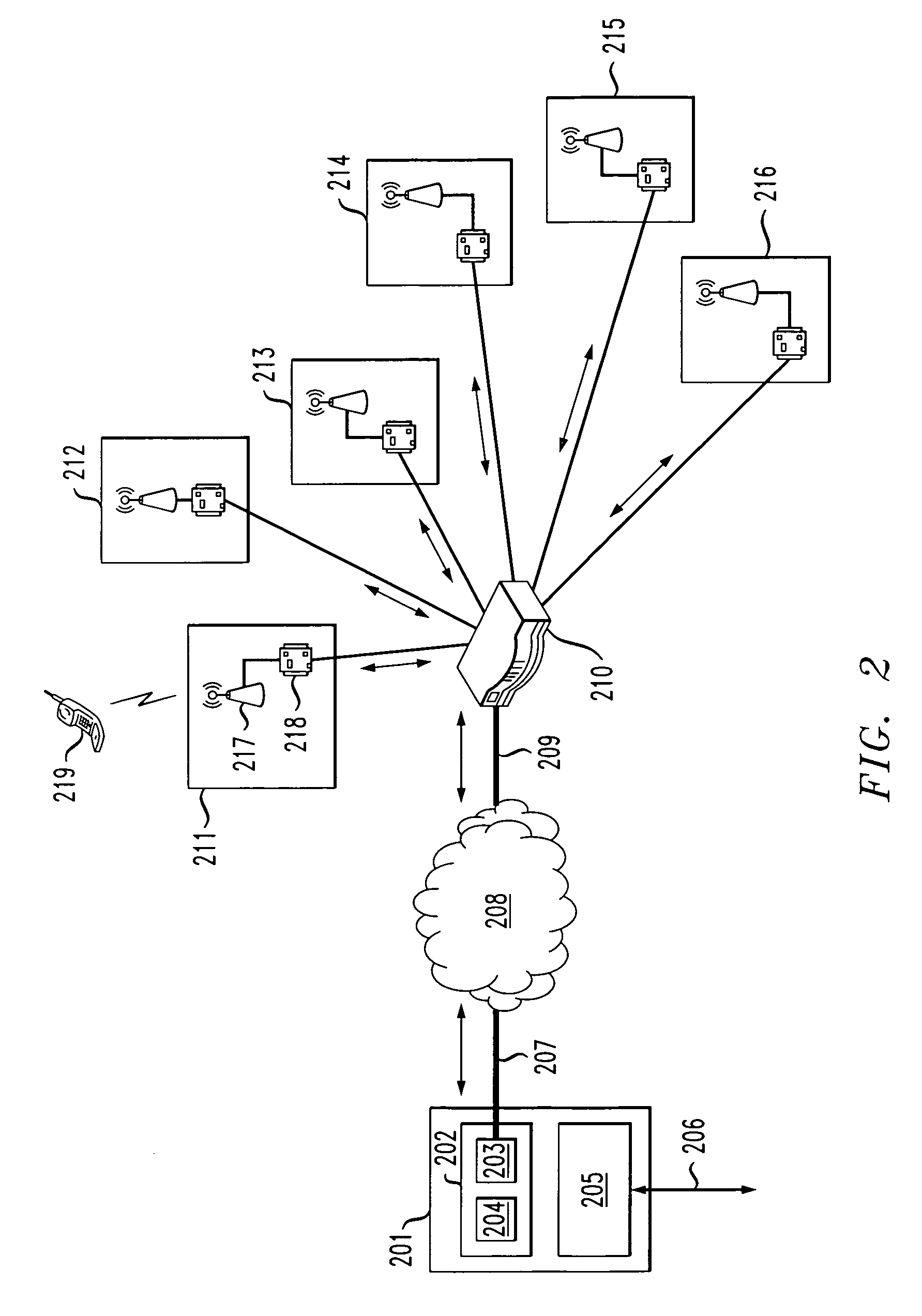Method and apparatus for cellular communication over data networks
a technology of data network and cellular communication, applied in the field of wireless communication, can solve the problems of unfavorable handoff, service interruption, frequency however, previously unrecognized problems, etc., and achieve the effect of reducing the number of packet streams and increasing the possible number of available radio transceivers
- Summary
- Abstract
- Description
- Claims
- Application Information
AI Technical Summary
Benefits of technology
Problems solved by technology
Method used
Image
Examples
Embodiment Construction
[0024] For pedagogic purposes the invention will first be described as to the aspects involving handoff initiated when entering or exiting a building and second as to a particularly advantageous configuration for the internal wireless system. The handoff aspects are implementable by modification from traditional internal systems or in a particularly advantageous embodiment with the inventive internal wireless system configuration.
[0025] As to the handoff aspects a non-primary, e.g. pilot, channel of an internal transmitter is employed. As shown in FIG. 4, an antenna 43 radiating on this non-primary channel is positioned within a building in proximity to, generally within 100 feet of, an entrance 42 for building 41. The signal strength of the non-primary channel from antenna 43 is limited to avoid unacceptable interference with users external to the building. Unacceptable interference occurs when the strength of the non-primary channel from antenna, 43, measured by a mobile passing ...
PUM
 Login to View More
Login to View More Abstract
Description
Claims
Application Information
 Login to View More
Login to View More - R&D
- Intellectual Property
- Life Sciences
- Materials
- Tech Scout
- Unparalleled Data Quality
- Higher Quality Content
- 60% Fewer Hallucinations
Browse by: Latest US Patents, China's latest patents, Technical Efficacy Thesaurus, Application Domain, Technology Topic, Popular Technical Reports.
© 2025 PatSnap. All rights reserved.Legal|Privacy policy|Modern Slavery Act Transparency Statement|Sitemap|About US| Contact US: help@patsnap.com



